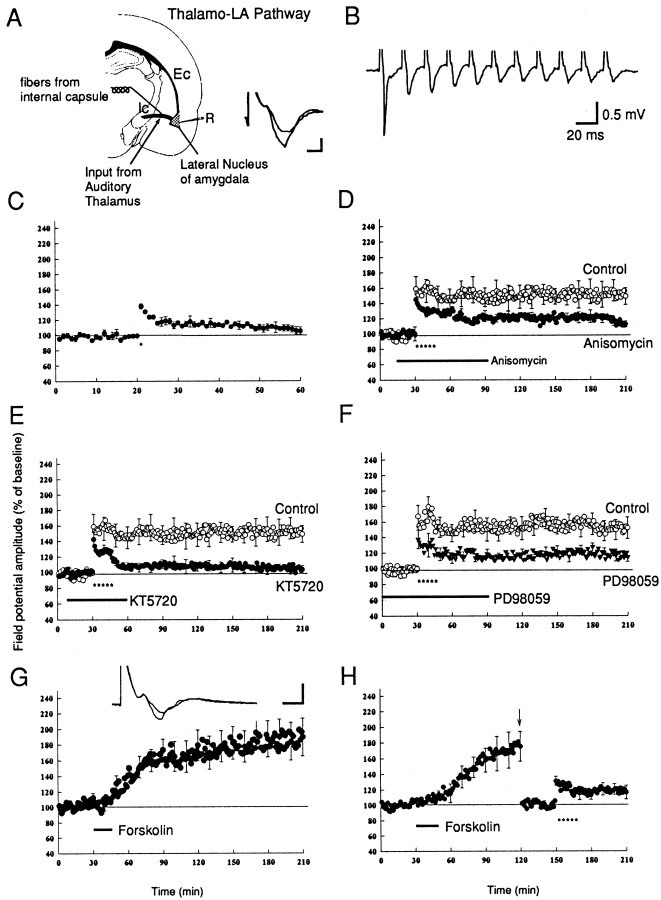Fig. 7.
L-LTP in thalamo-LA pathway. A, Schematic illustration of the recording and stimulation site in the thalamo-LA pathway, as described in Figure 1. The traceon the bottomright of the panel is the sample recording of a field potential in this pathway before and after LTP. B, Synaptic response during a 50 Hz tetanus stimulation in thalamo-LA pathway. The synaptic response followed tetanus in a one-for-one manner without failure, consistent with a monosynaptic response. C, A single train of tetanus (100 Hz, 1 sec, indicated by the asterisk) induces E-LTP (n = 6). D, Multiple trains of tetanus induce L-LTP in thalamo-LA pathway (n = 6), and this L-LTP is depressed by the protein synthesis inhibitor anisomycin (20 μm;n = 6). E, L-LTP in the thalamo-LA pathway is depressed by the PKA inhibitor KT5720 (1 μm; n = 6). F, L-LTP in the thalamo-LA pathway is depressed by the MAPK inhibitor PD98059 (20 μm; n = 5). G, Brief application of forskolin (50 μm; 15 min) induces a long-lasting synaptic potentiation in the thalamo-LA pathway (n = 6). Representative field potentials before and 3 hr after forskolin application are shown at thetop of this panel. Calibration: 5 msec, 0.5 mV.H, Forskolin-induced potentiation occludes the tetanus-induced LTP. At 90 min after the application of forskolin the stimulus intensity was reduced to obtain a new baseline, and five trains of tetanus were applied. The tetanus induced only a weak LTP (n = 5).

